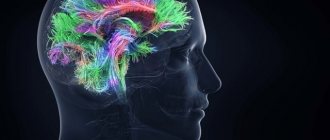Withdrawal syndrome in alcoholism is an acute, severe condition that develops in people with stage II and III alcohol dependence several hours after taking the last dose of alcohol.
Under the influence of somatic and mental attacks, a person cannot resist the craving for alcohol and continues to drink, going on a binge and provoking the progression of addiction. This component of dependence is called physical. It is easily treated with medication and is usually stopped at the very beginning of treatment for alcoholism.
Urgent detoxification
Cleansing dropper
To quickly remove breakdown products and improve well-being.
3500 ₽
Cleansing dropper with pain relief
To remove breakdown products of substances and relieve moderate pain during withdrawal.
5500 ₽
Deep cleansing
Complete relief from withdrawal symptoms and detoxification of the body. It is carried out in a hospital.
18 000 ₽
How long does withdrawal symptoms last?
Duration depends on:
- medical history;
- medical measures taken by the patient.
Without treatment, withdrawal symptoms can last for several weeks . Severe complications may develop, which without treatment can result in death.
If the patient refuses to drink alcohol, the condition lasts up to 1-2 weeks . Then the symptoms gradually subside.
With treatment, persistent improvement occurs within 3-5 days . The main part of the ailment disappears after detoxification and symptomatic therapy.
Don't suffer. Start treatment to relieve withdrawal symptoms
Don't know where to start?
Start by talking to an addiction counselor for free.
7
- or -
According to the international classification ICD-10 and the WHO definition, withdrawal has the following characteristics:
- occurs only after drinking alcohol;
- the interval between drinking alcohol and the development of alcohol withdrawal syndrome is 3-10 hours;
- symptoms reflect functional disorders of any body system;
- the condition lasts up to 7 days, but more often goes away within 48 hours.
Withdrawal occurs when the amount of alcohol in the blood decreases. Some of the ethanol is in the form of breakdown products - toxic acetaldehyde. Therefore, the patient suffers from both intoxication and a hangover.
AAS and hangover syndrome - the difference
Most withdrawal symptoms resemble a normal hangover (post-intoxication state). However, they are not equivalent. The following differences are distinguished:
- The structure of a hangover does NOT include a secondary pathological craving for alcohol, which is a sign of a developed addiction of at least stage 2;
- the course of AAS is usually more severe, more varied, and there is a possibility of death;
- against the background of a hangover, a person more often experiences an aversion to alcoholic beverages, and during abstinence, he painfully strives to drink again;
- the post-intoxication state is largely related to the amount of alcohol consumed over a short period of time;
- abstinence occurs, on the contrary, after an abrupt cessation of chronic intoxication, reflecting the psychophysical consequences of long-term addiction;
- hangovers rarely last more than 1-3 days, and symptoms of AAS can persist for weeks.
Even in young people with relatively intact compensatory capabilities, withdrawal syndrome includes the desire to use - a secondary pathological attraction. In this case, vegetative and mental disorders may be minor. To avoid the development of painful AAS, it is necessary to get rid of the addiction.
Types of alcohol withdrawal
The main classification of hangover is based on clinical manifestations.
Neurovegetative
The most common type of withdrawal causes a functional disorder of the autonomic system: dizziness, panic attacks, tremors, sweating, tachycardia. This condition is difficult to feel: the person feels as if he is having a heart attack or a mental attack. Moreover, during examination, markers of the cardiovascular system are often within normal limits.
Visceral
Symptoms in patients from this group are associated with the functioning of the digestive tract. Complaints include diarrhea, abdominal pain, nausea and vomiting. At the same time, they suffer from neurovegetative manifestations, which trigger disturbances in the gastrointestinal tract along with intoxication. A common complication of the visceral type of withdrawal is dehydration and electrolyte imbalance.
Cerebral
It provokes a painful headache reminiscent of a migraine, fainting, and epileptiform attacks.
Psychopathological
Mental disorders are expressed in depression, apathy, as well as disturbances of perception: patients can hear voices, see “little green men”, guess non-existent snakes in the outlines of shadows on the wall, claim that they are being watched, etc. This type of withdrawal syndrome is observed in chronic alcoholism.
According to the severity, withdrawal is differentiated into:
- light;
- average;
- heavy.
It is difficult to draw a line of demarcation between them: in addition to the hangover itself, the alcohol addict suffers from poisoning, complications, and exacerbations of chronic diseases.
Signs and symptoms
The duration of withdrawal symptoms will depend on what stage of alcoholism the patient is at. In the early stages, physical well-being deteriorates; in the later stages, the psyche is damaged, as a result of which a person’s mental health suffers.
Common withdrawal symptoms and signs include:
- constant thirst,
- frequent sweating,
- cardiopalmus,
- headache,
- gagging,
- constant weakness
- depressed state and bad mood,
- poor appetite
- redness of the eyes, skin of the body and face due to a rush of blood,
- high or low blood pressure,
- trembling hands
- swelling,
- poor coordination
- motor restlessness,
- difficulty sleeping,
- panic attacks,
- other mental illnesses,
- constant desire to drink.
It is worth noting that due to some symptoms, such as low mood and dry mouth, withdrawal symptoms can be confused with alcohol poisoning. The duration of withdrawal depends on many factors:
- drinker's age
- degree of neglect of alcoholism,
- individual characteristics of the body,
- duration of the binge.
Remember: the sooner drug relief of symptoms begins, the faster relief will come and the fewer complications there will be.
Differences between a hangover and withdrawal symptoms
A hangover is a common name for withdrawal symptoms. However, it is important to distinguish these two conditions from each other.
In a person free from alcohol addiction, drinking large amounts of alcohol causes post-intoxication syndrome. Its manifestations are similar to withdrawal, with the exception of cravings for alcohol. At the sight and smell of alcohol, a person will feel disgust and promise himself to “never drink again.”
A hangover is a sign of alcohol addiction. Unlike post-intoxication, it is always accompanied by a strong craving for alcohol.
Literature:
- Alcohol withdrawal syndrome / I.V. Bokiy, I.P. Lapin. – Leningrad: Medicine. Leningr. department, 1976. – 119 p.
- Modern approaches to the treatment of severe alcohol withdrawal syndrome (methodological recommendations) / Association of Narcologists, a professional community of narcologists; compilers: Vinnikova M. A and others. - Moscow: New Terra, 2022. - 47 p.
- Clinic of alcohol withdrawal syndrome and the dynamics of autonomic disorders with it: Abstract of thesis. for the scientific competition. Ph.D. degrees honey. Sciences / Moscow. scientific research Institute of Psychiatry. – Moscow: [b. i.], 1967. – 18 p.
Causes of withdrawal
The etiology of withdrawal syndrome has not yet been fully studied. But the most promising version, which the scientific community is leaning towards, is a disruption of the neurotransmitter system.
Ethanol is a psychoactive substance. It can change a person’s mood, behavior and feelings. When drinking, he feels cheerful and relaxed or peaceful: exactly how intoxication will affect the personality depends on which receptors ethanol binds to.
For example, the effect on dopamine receptors will give a feeling of euphoria, joy, high spirits and a sense of strength. When ethanol is metabolized, the condition gradually returns to normal. But if a person drinks regularly, his body reduces the production of its own dopamine, because its function is already performed by alcohol. Therefore, when sobering up, a person is faced with a lack of dopamine, which provokes:
- depression;
- apathy;
- suicidal thoughts.
To return to a euphoric state, the addict unconsciously reaches for a new dose, thereby causing the progression of the disease.
In addition to dopamine receptors, other receptors are also involved in the formation of a hangover:
- GABA;
- NMDA et al.
Therefore, the motives for drinking alcohol among addicts may differ: one needs another serving of alcohol to improve their well-being, another needs to suppress sad thoughts, and a third needs to calm down. The patient constantly increases the amount of ethanol consumed, the body's tolerance increases, so over time, even severe intoxication does not bring him pleasure.
How to relieve withdrawal symptoms?
The development of AAS cannot be predicted. Treatment measures should be aimed not only at eliminating existing symptoms, but at preventing more serious disorders. The best option is hospitalization in a hospital.
In mild cases, medical care can be provided at home. However, in any clinical scenario, the patient must be shown to a doctor who can assess the condition and determine indications for hospitalization.
The somatoneurological consequences of long-term alcoholism can be life-threatening.
Treatment at home may be ineffective due to the constant pathological craving for alcohol. Patients lack adequate criticism of their condition. They often lie to gain access to the psychoactive substances they want, even knowing the possible health risks.
Diagnosis of symptoms of alcohol withdrawal syndrome
The manifestations of withdrawal are similar to a number of acute mental disorders and traumatic brain injuries, therefore, to differentiate the diagnosis, the doctor specifies the following signs:
- the person has recently consumed alcohol;
- symptoms consistent with alcohol withdrawal;
- other pathologies not related to alcohol consumption were not identified.
Further diagnostic measures are related to:
- clarification of the severity of the condition;
- identifying the main risks;
- compiling an anamnesis.
The list of mandatory studies carried out after examination and questioning of the patient includes:
- general and biochemical blood test;
- urine test;
- electrocardiogram.
Additionally, the doctor prescribes:
- Wasserman reaction test, antibodies to hepatitis B and C, HIV;
- comprehensive ultrasound of the abdominal organs;
- toxicological study;
- fluorography;
- electroencephalogram;
- consultation with other specialists.
When providing assistance at home, the doctor performs a minimum of diagnostic procedures: takes an ECG, measures blood pressure and pulse, and blood sugar levels. But if there are alarming symptoms that indicate a high risk of complications, the patient is hospitalized in the clinic.
There are three degrees of severity, the data of which allows you to draw up a more accurate therapeutic plan:
1. The first degree is usually diagnosed with short-term addiction and short-term binge drinking. Complaints are limited to asthenia, autonomic imbalance and thirst.
2. The second degree of severity develops with heavy drinking for up to 1-1.5 weeks. Due to severe intoxication, a person suffers from fluctuations in blood pressure, tachycardia, and a feeling of foggy consciousness.
3. The third degree usually occurs when binge drinking lasts longer than a week and a half, and is accompanied by somatic and mental disorders and an increased risk of severe complications.
During a long-term drinking binge, a person sequentially goes through all three stages, and the rate of development depends on the state of health, genetics, and the amount and type of drink consumed.
Abstinence at stage 2 of alcoholism
The second stage of alcohol addiction is diagnosed when memory loss begins to appear. A person, having sobered up, still cannot remember what happened after taking a certain dose of alcohol. All negative experiences are erased from memory.
The dose of alcohol that causes amnesia decreases over time.
At this stage, the appearance of insomnia due to drinking alcohol is typical. Falling asleep is difficult, and is possible either after sobering up or after high alcoholism.
The character begins to deteriorate, irritability appears. To improve your mood, you need to drink alcohol. Mental and physical dependence is finally formed.
Attraction becomes noticeable: it causes sweating, pupils dilate, and heartbeat accelerates.
Withdrawal syndrome is the most important diagnostic criterion of the second stage of chronic alcoholism. It appears every time an alcoholic, on his own or under pressure from circumstances, stops drinking.
Symptoms appear 8 to 10 hours after the last dose and last 3 to 7 days.
Nonspecific symptoms appear first.
• Feeling of weakness, general discomfort
• Vegetative manifestations: chills, diarrhea.
During the first days, the severity of the condition increases, and specific manifestations arise:
• Sweating and dilated pupils
• Increased muscle tone and widespread tremors
• Revitalization of reflexes
• Increased blood pressure and rapid heartbeat
• Painful insomnia
• Nausea, vomiting, diarrhea.
At the beginning of stage 2 of alcoholism, withdrawal symptoms are easily relieved with tea, coffee or a cold shower. As it progresses, a hangover or medical attention will be required for relief.
The longer a person suffers from alcoholism, the more strong drinks he becomes hung over. Thus, a hangover in the morning turns into binge drinking syndrome. Tolerance to alcohol increases, and doses become larger. A person can drink up to 2 liters of strong drinks without symptoms of acute poisoning.
Mental manifestations appear if you do not fight drunkenness.
• Irritability
• Anxiety and vague fear
• Depression, feelings of guilt and worthlessness
• Persecution Delusion Syndrome
At this stage, alcoholic psychosis may already develop with manifestations of aggression towards others.
Severe withdrawal is characterized by the appearance of:
• Convulsive seizures similar to epileptic ones.
• Psychosis with hallucinations or delusions, “delirium tremens.”
Seizures are one-time, and delirium delirium often develops after them, so relatives need to call an ambulance in a timely manner.
The second stage of alcoholism can last for 10-20 years. Breaks from drinking alcohol will be accompanied by increasingly severe and pronounced withdrawal symptoms.
Types of Treatment for Alcohol Withdrawal
Self-medication is the most common and ineffective approach. Taking drugs without a doctor's prescription, a person can provoke the development of severe side effects: incompatibility of drugs, allergic reactions and the effect of drugs on internal organs suffering from intoxication. In case of alcohol withdrawal, you need to consult a doctor and undergo a course of treatment.
At home, the doctor provides assistance for mild to moderate severity. When a person does not have chronic diseases and is not in serious condition. At home, you can install an IV and also give the patient a set of medications that will relieve the unpleasant symptoms of a hangover and prepare the patient for the next stage of treatment.
Therapy in a hospital is carried out at the request of the patient, as well as in the presence of objective indications. At the clinic, the patient receives round-the-clock monitoring, rapid adjustment of prescriptions if the condition worsens, as well as hardware detoxification techniques and physical therapy.
Traditional methods cannot stop withdrawal symptoms. Some recipes can reduce intoxication and also dull unpleasant symptoms due to the sedative effect of medicinal plants. However, when using decoctions and infusions, it is important to consider that the result is felt only when the active substance accumulates in the body, while many plants are toxic and can harm the liver and kidneys.
Rapid relief of alcohol withdrawal is achieved through symptomatic and supportive therapy. That is, the manifestations of the condition are muffled with medication before the body truly recovers and the craving for ethanol disappears.
If you need emergency help, contact Alco-Center
Call the hotline +7 (495) 773-03-43 and our doctors will provide emergency care for intoxication of the body with breakdown products of alcohol and narcotic substances.
from 3,200 rub.
Withdrawal from binge drinking
Emergency body detoxification procedure
from 4,000 rub.
Coding
Urgent blocking of cravings for alcoholic beverages
from 68,000 rub.
Rehabilitation
Comprehensive rehabilitation giving 100% results
Drugs for the treatment of withdrawal symptoms in alcoholism
In drug treatment practice, an individual set of drugs is used. After detoxification, the doctor prescribes to the patient:
- tranquilizers;
- antidepressants;
- sleeping pills;
- anticonvulsants;
- vegetative stabilizing drug;
- nootropics and cerebroprotectors;
- vitamin complexes;
- antioxidants.
The drugs should be taken in courses under the supervision of doctors. Many psychotropic drugs cause withdrawal symptoms, so it is important to prevent drug cravings from developing.
Diagnostics
The doctor makes a diagnosis depending on what symptoms have already appeared by the time you contact a narcologist. One of the most important symptoms is the continued craving for drinking. Questioning the patient helps determine the exact diagnosis and what stage the disease is at.
The list of factors that the doctor needs to know includes:
- Duration of drinking strong drinks.
- How strong is the craving for drinking the next day after drinking, how quickly does it make itself felt and what is the degree of its intensity.
- Does the patient get better from drinking a new portion of alcoholic beverages?
- Is the person ashamed of his addiction?
- Is there motivation for sobriety?
- Do you have any chronic diseases or allergic reactions to foods?
In addition to the interview, a physical examination is required to establish a diagnosis, which helps identify clinical manifestations.
Complications and possible consequences
Alcohol withdrawal is the main trigger for binge drinking. When a person drinks alcohol in large quantities, he can face any kind of disorder. The list of the most common complications includes:
- liver damage;
- cardiovascular accidents;
- impaired filtration capacity of the kidneys;
- seizures;
- mental attacks.
Another consequence of withdrawal is the progression of addiction. At the terminal stage of alcoholism, it is much more difficult to cope with the disease, and some pathological changes in health and personality are almost irreversible. If you or a loved one is struggling with alcoholism. Don't delay, seek help and start treatment.
Content:
- Causes of withdrawal syndrome
- Signs and symptoms
- Consequences of withdrawal
- Diagnostics
- How to get rid of withdrawal symptoms
- How can you help a patient suffering from alcohol withdrawal?
Alcohol withdrawal is a serious condition that occurs after a person who has been drinking alcohol for a long time suddenly stops taking it.
A new dose of alcohol helps to make you feel better. This creates a certain cycle in which the addict can no longer painlessly stop drinking, even if he wants to. As a rule, withdrawal syndrome appears in the later stages of alcoholism. It is sometimes confused with a hangover. However, in case of intoxication resulting from prolonged drinking, a new dose of intoxicating drink will not improve, but will only worsen the person’s condition. How long does abstinence last, what are its causes, how to relieve the main manifestations - let's figure it out together.











